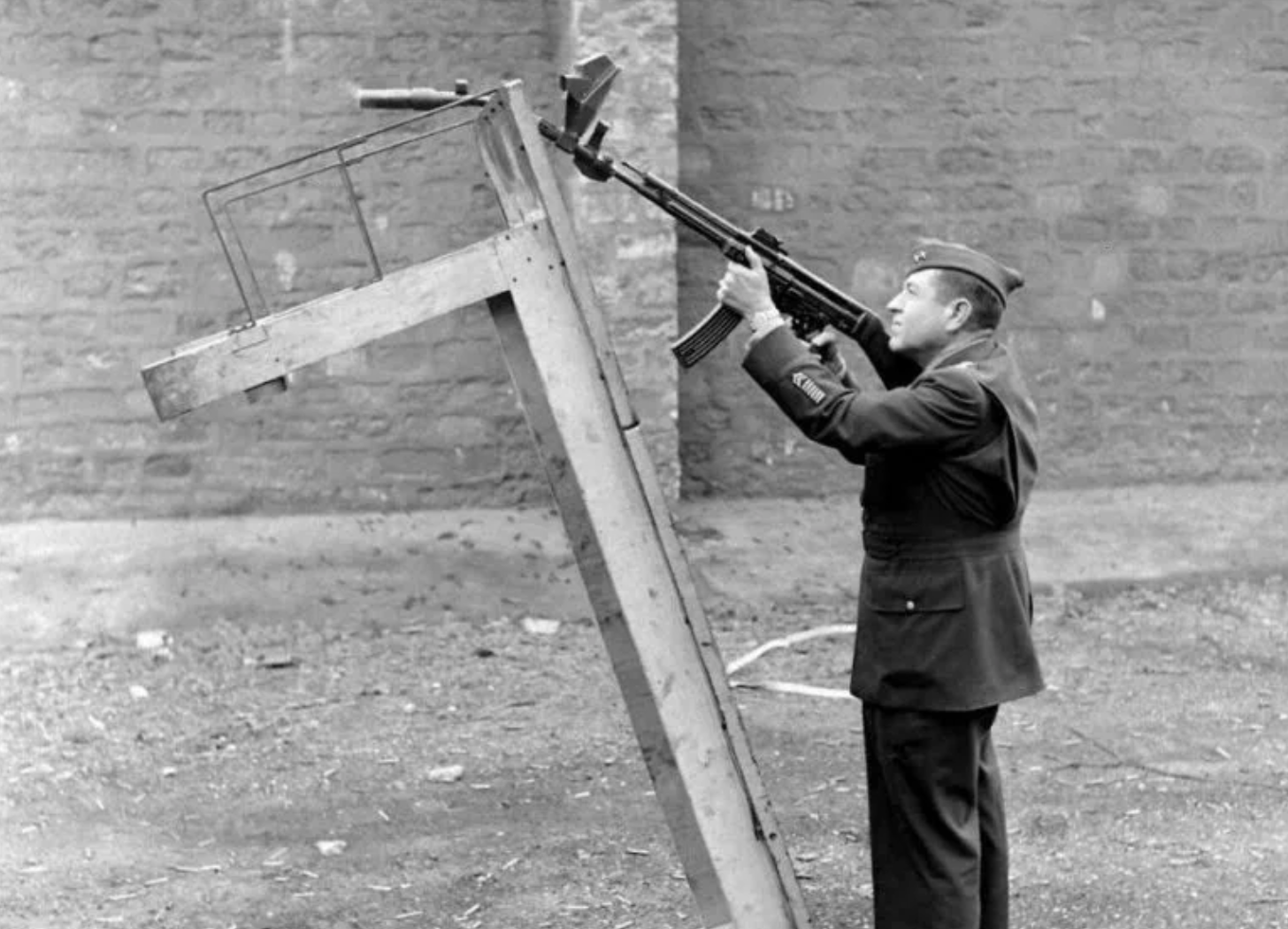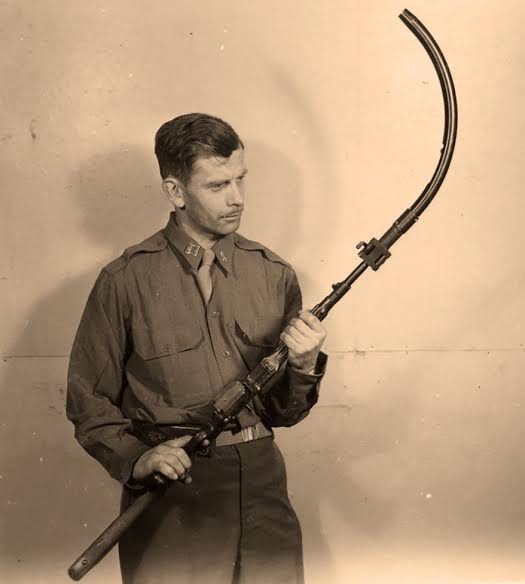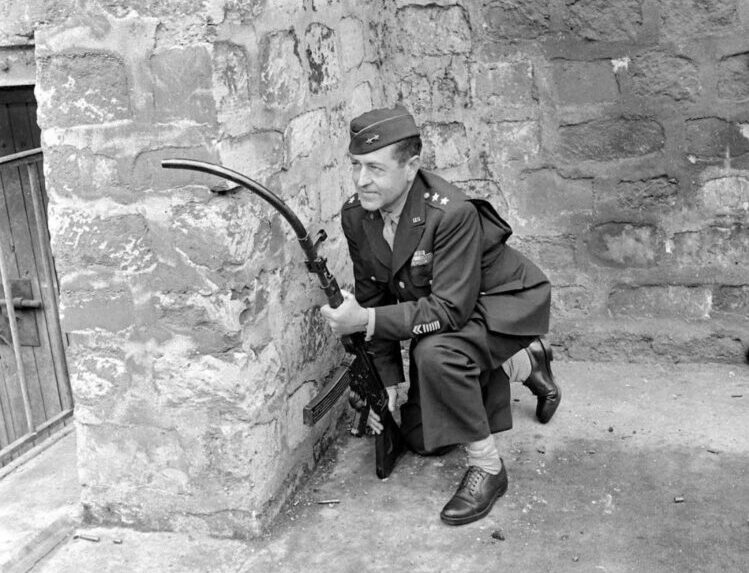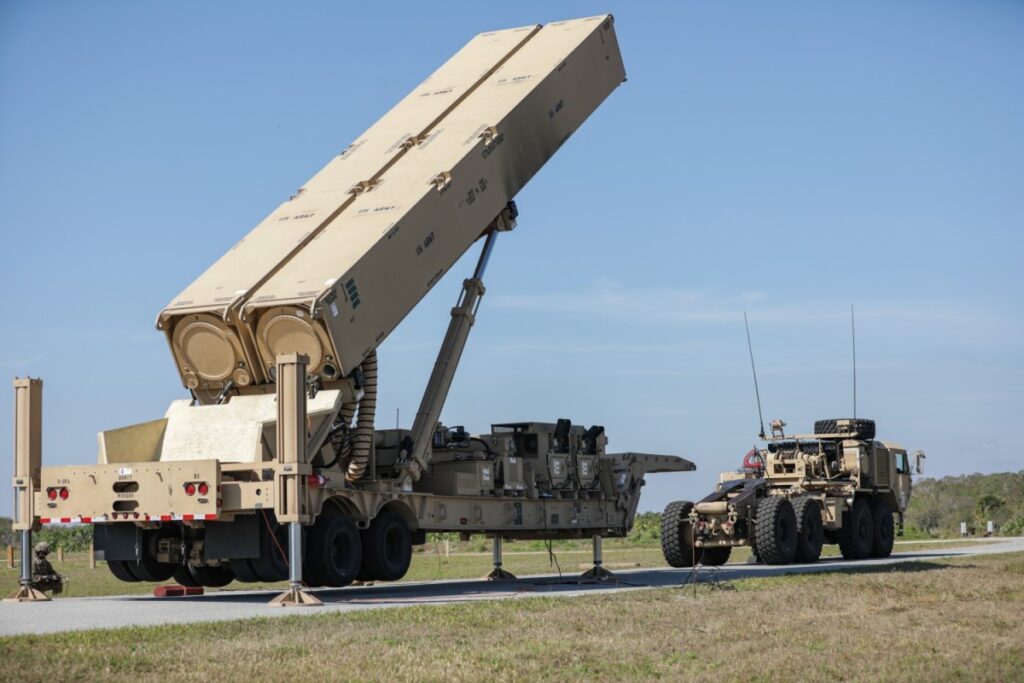Germany has a long tradition of innovative arms designs. This reputation has allowed us to often overlook their more creative but less great creations. The Krummlauf variant of the StG 44 is one of them.
The Krummlauf is a bent barrel attachment for the STG 44, which is often credited as the first assault rifle. Several variants were produced, and they attempted to add several different degrees of a curve to the barrel; they included 30-, 45-, 60-, and even 90-degree barrels. The 30-degree variant was the only model ever produced in high numbers.
The Krummlauf came about in 1944 when the war wasn’t going well for the Germans. They were losing and growing desperate so they were willing to try anything to get some edge in combat, and this attitude produced some silliness.
The Krummlauf infantry and armor variants

Early versions used a 20mm barrel attached to the 7.92mm barrel. They used the much bigger bore because they figured the curve would create too much friction and stress, which would cause potentially devastating results. Yet, the engineers soon figured out that a proper 8mm barrel worked much better.
The Krummlauf came in both infantry and armor variants. Infantry variants featured a 30-degree barrel, and armor versions used the more extreme 90-degree version. The idea behind the infantry version was that the soldier could shoot above or around cover without exposing themselves to enemy fire.
A periscope-style optic was produced for the infantry version that allowed the weapon to be aimed — or, well, kind of steered in the right direction. There was no way to aim the armored version, and its intent was to chase off infantry who had gotten a little too close.
Related: Nazi drone technology and the Goliath tank killer
Why the Krummlauf failed

The Krummlauf was a disastrous project and a serious waste of Nazi resources. It failed for three reasons.
Firstly, having a curved barrel creates an incredible amount of gas pressure. The Germans installed vent holes to help relieve the pressure, but this didn’t do much to preserve barrel life. It was reported that the barrels lasted for only about 300 rounds. For comparison, a modern barrel’s life is measured in thousands of rounds.
Secondly, the weapon’s bullets broke at the bend, as the US Army discovered when it got a hold of a Krummlauf and an STG 44 and tested them. Broken bullets don’t have the best terminal effect on the target or penetration through any form of cover, so this resulted in a weapon effective only at extremely close ranges
Thirdly, the Krummlauf was very inaccurate. While this weapon was only intended for short-range use, it seemed to have about the same accuracy potential as a 9mm pistol.
If you were simply watching one spot, then the concept might work. But if you are in a close-range firefight, where things are moving fast, aiming with some periscope attachment and iron sights would be incredibly slow. Peaking around a corner might expose you a bit more, but it makes it easier for shooters to engage threats.
The Krummlauf should have never left the prototype stage.
Read more from Sandboxx News
- The Marines want to make their secret beach-swarming drones autonomous
- Guardian Encore gives veterans a chance to open up through music
- Military women who inspire
- The race to field NGAD, the futuristic replacement for the F-22 Raptor, is officially on
- Images surface of secretive US MALD flying decoy used in Ukraine. But what is MALD?





